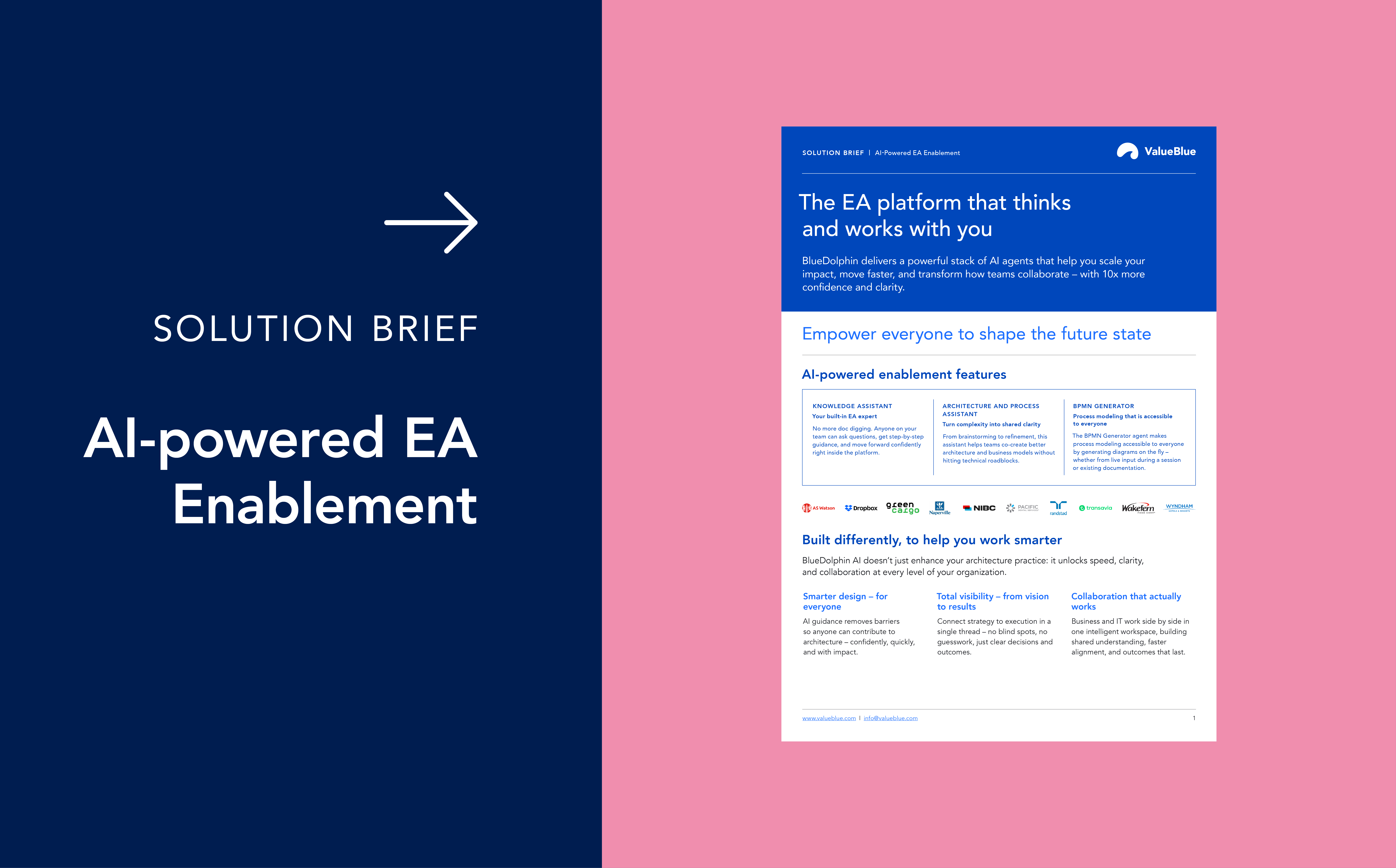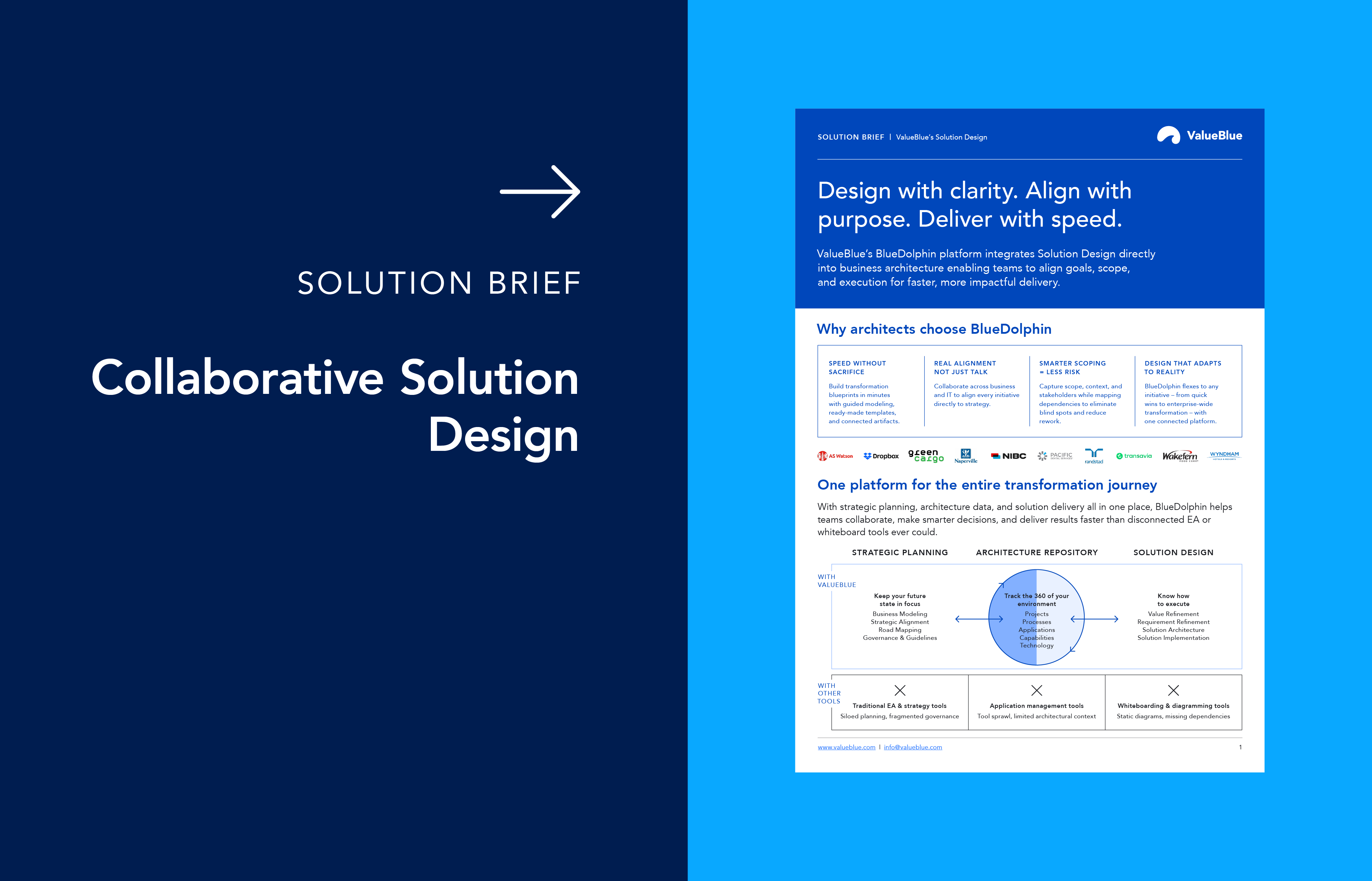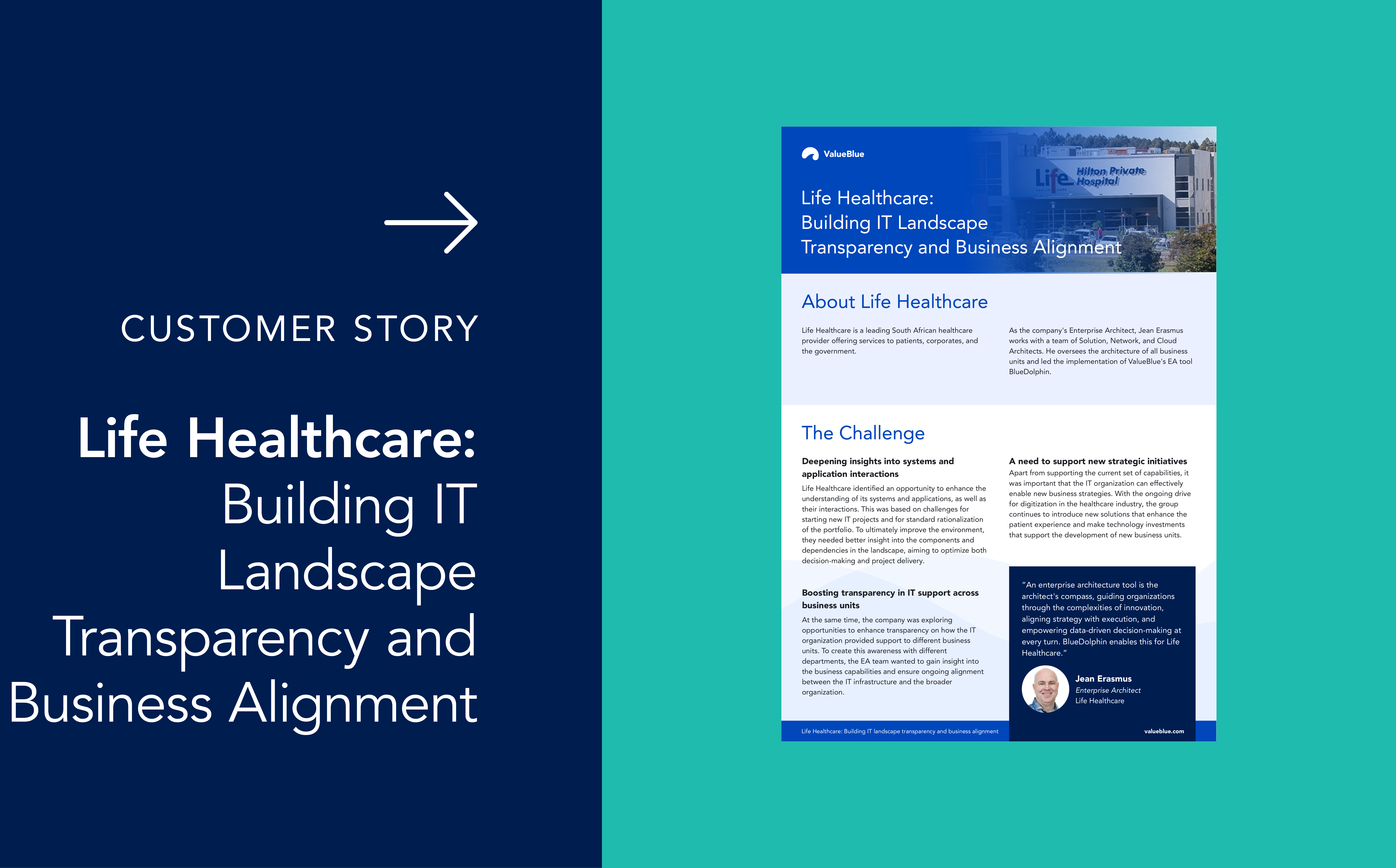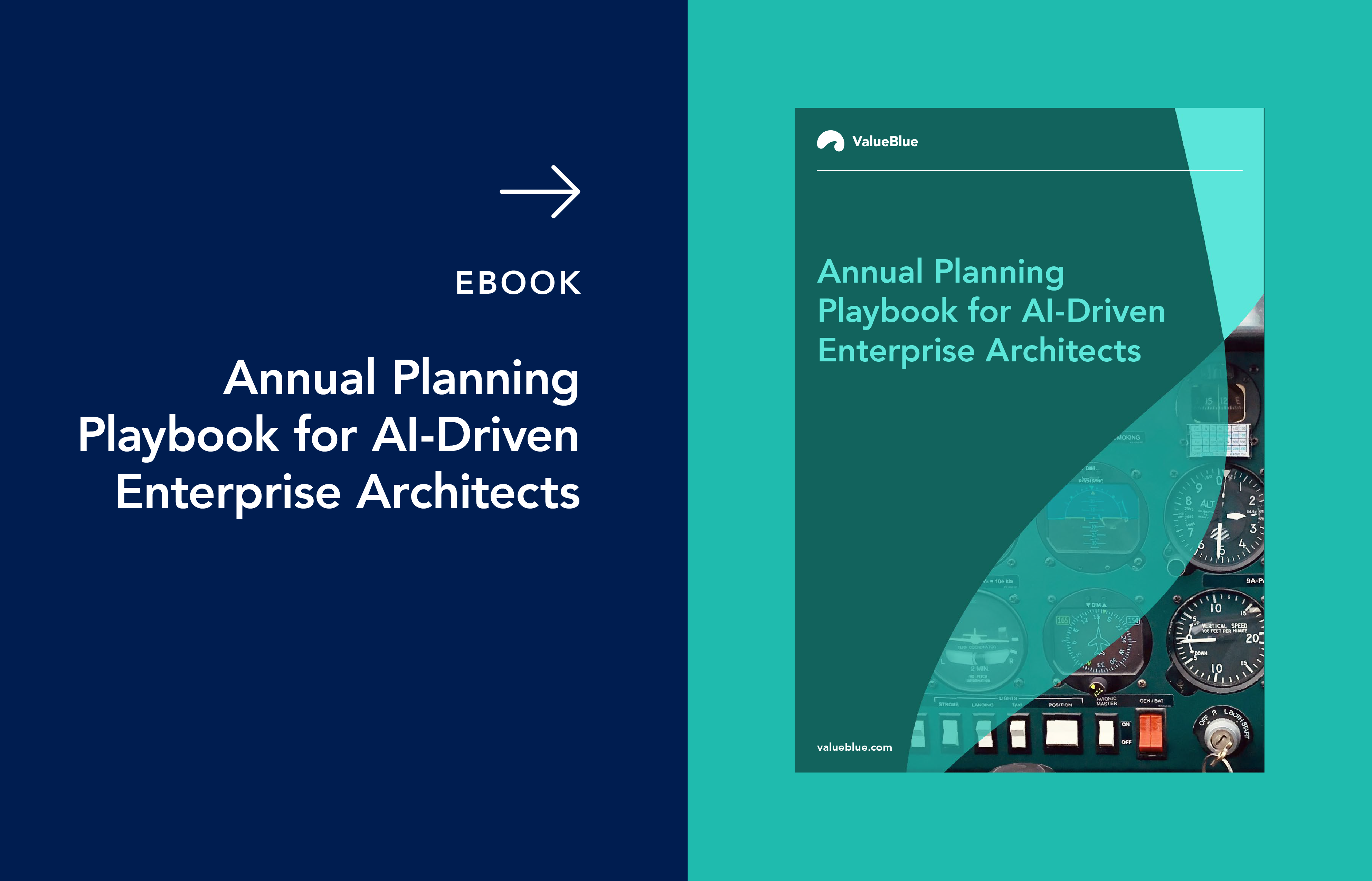Leading Change Management with Enterprise Architecture
As the world becomes more and more digital, organizations face constant pressure to adapt and evolve. Technological advancements, shifting market demands, regulatory changes, and increasing customer expectations have shortened the business innovation cycle. Companies that cannot adapt quickly risk losing their competitive edge, customer loyalty, and viability.
Managing change is inherently complex: it involves not just updating technology or tweaking processes, but orchestrating transformations across people, culture, systems, and strategies. Successful change management is no longer a luxury – it's a necessity for survival and growth. Enterprise Architecture (EA) tackles the complexities of change by providing the structure, visibility, and strategic alignment organizations need to navigate transformation successfully.
What is change management?
Change management is the structured approach organizations use to transition teams and the entire business from a current state to a desired future state. It involves preparing, equipping, and supporting people to adopt change to drive organizational success and outcomes. Effective change management ensures that the human side of change, such as employee adoption, stakeholder engagement, and cultural alignment, is actively managed alongside strategic and technological transformation.
Why traditional change management is not enough
Many change management efforts fail due to a lack of clear understanding about how different parts of an organization interconnect. Without a comprehensive view of business capabilities, IT systems, data flows, and operational dependencies, it's easy to misjudge the impact of change.
This is where Enterprise Architecture becomes essential. EA helps change managers to:
- Map dependencies between people, processes, and technology.
- Assess risks and identify potential obstacles early.
- Prioritize initiatives based on business value and technical feasibility.
- Align transformation efforts with strategic objectives.
The relationship between change management and Enterprise Architecture
Change management focuses on guiding individuals, teams, and organizations from a current state to a desired future state. Enterprise Architecture provides a structured framework to understand and navigate the complexities involved in organizational change. When combined, they create a synergy that enables organizations to adapt faster, with alignment among teams and less risk.
Enterprise Architecture serves as a blueprint of an organization, capturing business processes, information flows, technology assets, and governance structures. This helps organizations understand the implications of change initiatives. It ensures that their strategic goals are achieved without disrupting critical operations.
Benefits of Enterprise Architecture in change management
1. Visualization of current and future states
Effective change management requires a clear vision of both the current and future states. Enterprise Architecture provides detailed visualizations that capture the current operational landscape and the desired future design. This makes it easier to communicate the rationale for change across all levels of the organization.
2. Impact analysis and risk mitigation
Change initiatives often have ripple effects across systems, teams, and business units. EA tools facilitate impact analysis by showing how proposed changes affect interconnected components. Identifying these dependencies early allows organizations to develop mitigation strategies and avoid costly disruptions.
3. Stakeholder alignment
One of the challenges in change management is gaining support from stakeholders with different priorities and concerns. Enterprise Architecture addresses this by providing clear, data-backed visualizations of how proposed changes impact processes, systems, and outcomes. This fosters trust among stakeholders, aligns interests, and speeds up decision-making.
4. Prioritization and roadmapping
Enterprise Architecture enables organizations to prioritize initiatives based on their alignment with strategic goals, resource availability, and technical complexity. With a clear roadmap, change managers ensure steady progress toward transformation objectives.
5. Agility and continuous improvement
By continuously updating architectural models based on real-time business insights, operational data, and strategic priorities, organizations can quickly assess the impact of emerging technologies, enabling them to adapt to regulatory shifts more effectively. This approach also enables them to pivot effectively in response to changing market dynamics.
Going beyond customary Enterprise Architecture perspectives
Building on EA's role in providing insights, supporting communication, and enabling agility, there are several ways Enterprise Architecture adds even more value to change management:
- Solution Design: Enterprise Architecture tools enable organizations to create tailored, future-proof solutions that align with strategic objectives. This approach helps teams align business and IT, integrate new technologies, reduce risks, and optimize resources. By leveraging real-time data and collaborative tools, organizations can create customized roadmaps that ensure sustainable transformation and maximize long-term value.
- Cultural transformation: Successful change requires cultural shifts as well. Enterprise Architecture can help visualize cultural dimensions and link them to business capabilities, supporting holistic transformation.
- Governance and compliance: In highly regulated industries, ensuring that change initiatives comply with legal and regulatory requirements is critical. EA frameworks embed governance processes into transformation initiatives, ensuring accountability and reducing risk.
5 steps to start integrating Enterprise Architecture into change management
1. Start with clear objectives: Define what success looks like for both your EA initiatives and your change management efforts. This will help your team to set realistic goals, align efforts across departments, and ensure that all activities contribute to the general transformation strategy.
2. Engage stakeholders early: Use visual models and data-driven insights to engage stakeholders from the outset. Early engagement ensures that all key players have a shared understanding of the change process and helps identify concerns and opportunities that may be overlooked.
3. Adopt agile methodologies: Break large transformation initiatives into smaller, manageable sprints with measurable outcomes. This approach allows teams to quickly address challenges, adjust strategies, and demonstrate progress, keeping momentum high throughout the process.
4. Invest in collaborative platforms: Choose an EA tool that facilitates collaboration between business and IT teams. Collaborative platforms enable seamless communication, increase transparency, and ensure that both sides are aligned in their vision and execution of the transformation.
5. Measure and adapt: Establish KPIs for Enterprise Architecture and change management. Use feedback loops to continuously refine approaches. Regular monitoring and adaptation allow organizations to stay flexible. This enables data-driven decisions that keep the transformation on track and aligned with strategic goals.
Enterprise Architecture is the backbone of successful change
In a world of constant change, integrating Enterprise Architecture into your change management strategy is essential, not optional. By providing the visibility, insights, and frameworks needed to navigate complex transformations, EA empowers organizations to move forward with confidence.
BlueDolphin offers integrated change management and enterprise architecture capabilities to help you visualize your organization's current and future states, model different scenarios, and align business and IT strategies. Book a demo today.






